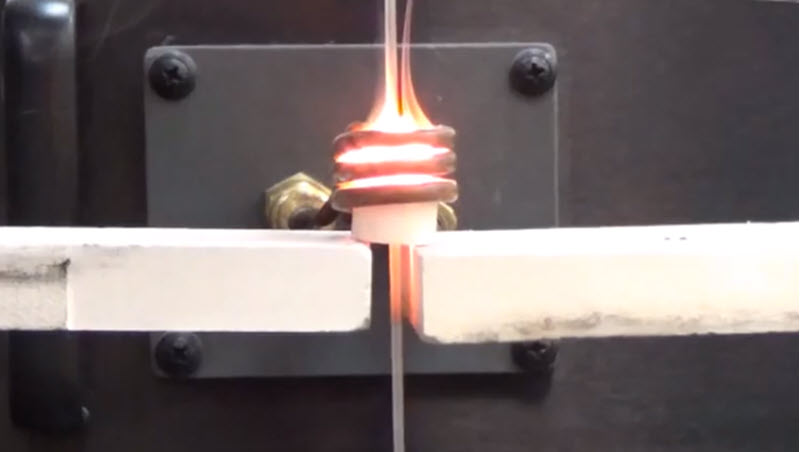Induction Brazing an Aluminum Assembly
Objective A company wanted to assess using induction heating for their aluminum assembly brazing process, and contacted THE LAB at Ambrell to utilize...
Applications
Applications: More
Applications: More

Industries:
Industries: More
Industries: More
Industries: More

Products:
Products: More
Services:
Services: More

Learn:
Learn: More
About:


A client needed to heat a steel susceptor in order to heat glass rods for a glass cutting application. They decided to take advantage of free parts testing from THE LAB at Ambrell. Given their requirements, Ambrell's team of application engineers determined that an Ambrell EASYHEATTM 1.2 kW, 150-400 kHz induction heating power supply with a custom-designed single position multiple-turn helical coil would be the optimal solution for this application.
Initial tests were conducted to optimize the power delivered to the part. A pyrometer was used to measure the temperature of the part until it reached the target temperature. It was observed that it took eight seconds to heat the sample to 2000 °F (1093 °C) and melt the glass. This met the client's objectives.
THE LAB confirmed the viability of this application. Induction offered fast, safe and repeatable heating that would work well for susceptor heating for glass cutting. To learn more about free induction heating testing by our expert induction heating application engineers, visit our website. Or click the image below to check out application notes from THE LAB.

Objective A company wanted to assess using induction heating for their aluminum assembly brazing process, and contacted THE LAB at Ambrell to utilize...

Induction heating is a process that uses electromagnetic fields to heat electrically conductive materials. It has been used in numerous industries...

Induction heating, a process that uses electromagnetic induction to heat electrically conductive materials, is often thought of for large industrial...